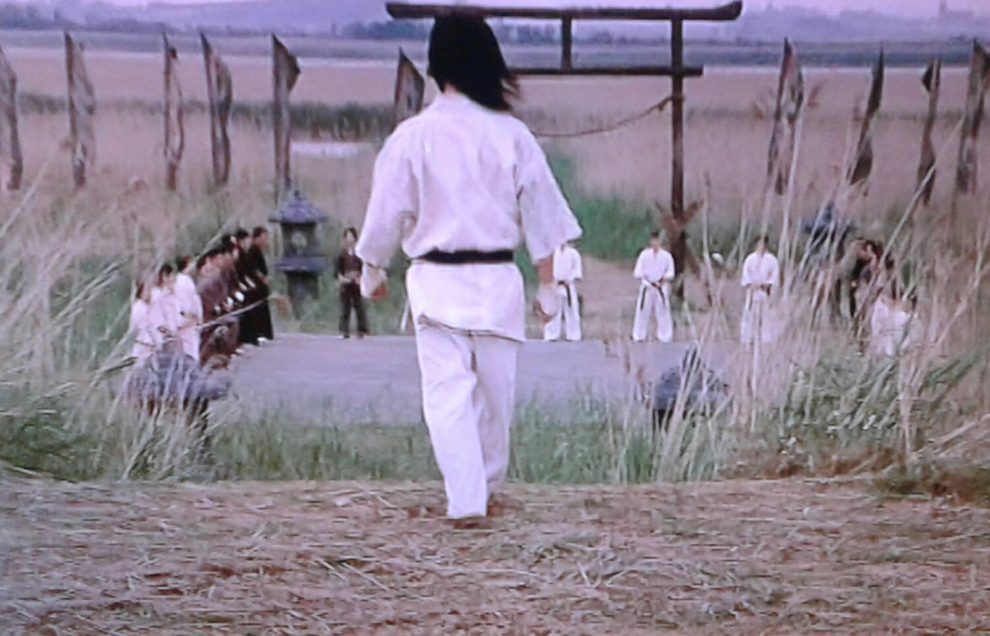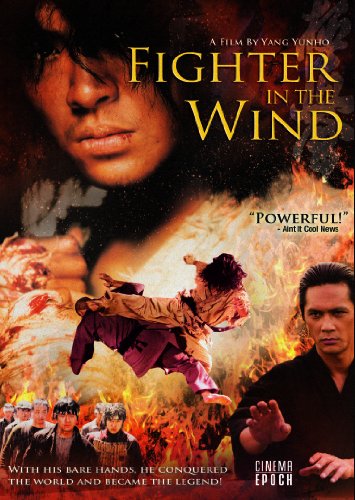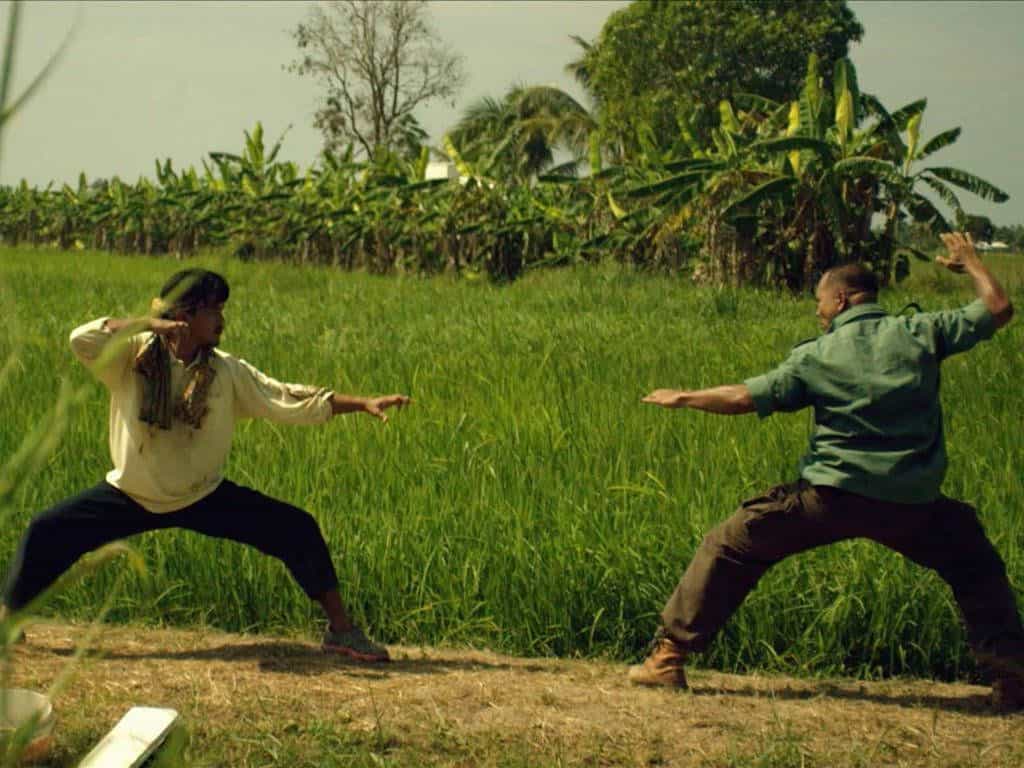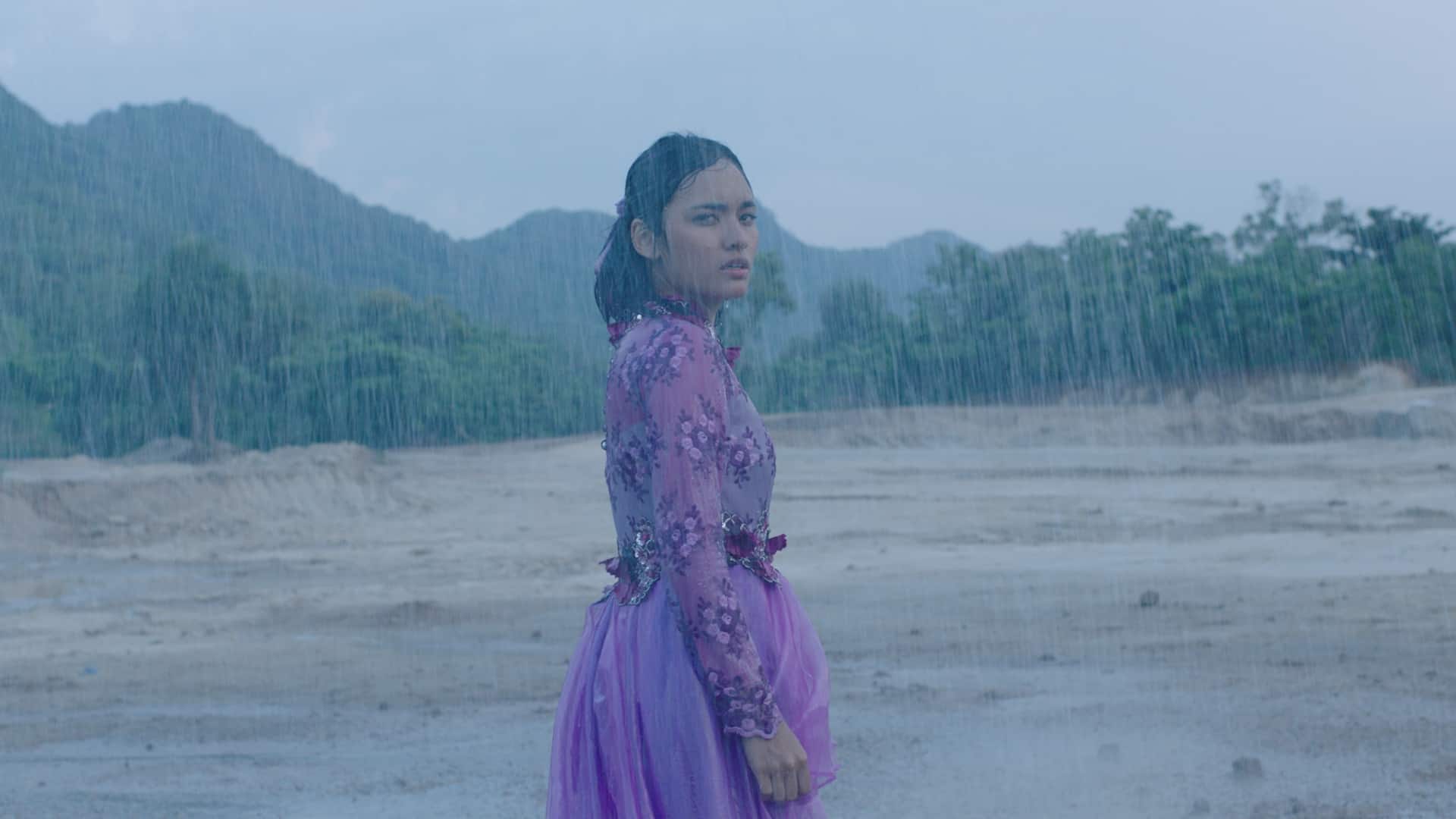“When fact becomes legend, print the legend”. The story of Masayatsu Oyama is certainly one of those. A Korean fighter who developed his own form of karate and fought a bull certainly has a tale to tell. As we know though, historical fighters can have their stories weaved into the fabric of legends and reinterpreted for different generations. This is an adaptation from an acclaimed manga comic as opposed to a straightforward biopic so can confidently expect a little bit of dramatic licence and elaboration.
Buy This Title
Bae-dai (Yang Dong-guen) heads to Japan with dreams of being a fighter pilot only to see this ideal crushed and his fellow Koreans used as suicide pilots. Tied up as American planes attack the camp, they are set free by Kato (Masaya Kato), not out of kindness but because they are deemed unworthy to be considered for Kamikaze duty. They fight and through throwing dirt at Kato, Bae-dai is able to land a blow before being defeated. Post war he finds himself struggling to get by and after rescuing a friend, is forced to lick a Yakuza's boots. Aided by Beom-su (Jung Doo-hong), he learns martial arts from his former friend and becomes a rickshaw driver protecting Geisha from American GI's. After the death of Beom-su at the hands of the Yakuza , Bae-dai challenges fighters from across Japan whilst slowly building a relationship with Yoko (Aya Hirayama). After a fight that results in the death of another fighter, he visits the fighter's family in search of redemption. This can only be found in a final confrontation with Kato as they both seek to restore their honour.

Upon its original release, I remember criticism as to the fight scenes and the action choreography not coming across too well. Upon a cursory glance, this could be seen to be the case. It is heavily stylised with a whole range of techniques involved from freeze frame panels to stop motion style slow motion. If you consider that this is an adaptation of a manga comic then this visual style becomes clearer to understand. My only critique of the choreography is not in the action itself as such, but more in the way it is framed. There is a tendency to have a lot of shots in medium close up that blurs the impact of the sequences. Jeong Du-hong is one of the best modern day action choreographers, so it's a slight shame that the direction masks it to a degree. This is of course an individual opinion from someone who grew up on Hong Kong action cinema so others may completely disagree with me and is just a minor criticism that doesn't distract from its enjoyment.
It's the philosophical aspects that lift this to the upper echelons of action cinema though. Encouraged by Beom-su to understand the works of Miyamoto Musashi, Bae-dai evolves into an enlightened individual through the painful experiences he endures. Most martial arts films follow a similar tragectory, but “Fighter in the Wind” has one major difference. Usually, the protagonist learns his country's martial arts to show superiority to other forms. Here a Korean learns Japanese martial arts in order to prove his own worth as a human being after Kato deems him inferior and the thought of a Korean learning the art dishonourable.
Holding this all together is Yang Dong-guen. On screen virtually the whole time, it is a superb performance. A flawed individual and recognizably human. Bae-dai is not the “superman” that is a stereotypical heroic figure in such works. He is not afraid of death but being crippled, but we also see genuine fear as he tries to survive the post war chaos in Japan. This vulnerability makes him a more relatable lead character that is ably backed up by a solid supporting cast.
The best villians are those that rationalize their beliefs and are convinced they are right. Kato becomes more than just the typical antagonist, as he genuinely believes he is upholding the tradition of Japanese martial arts against someone he feels disgraces it. He represents the casual racism of the era where Koreans were deemed to be inferior, which only adds to his anger as cannot accept a Korean can land a blow on him. He has his own code of honour and is a parallel for the teachings of Beom-su. For him, victory is everything which belies his own motivation. A need to beat Bae-dai, not just to retain Japanese honour but to regain his own. Masaya Kato brings a dignified presence to this part which meshes well with Yang Dong-guen's more visceral performance as Bae-dai.
Ayo Hirayama's Yoko is on the surface the standard love interest. In martial arts cinema, that usually means being a tie that needs to be let go of in order for the protagonist to fulfil his goal. We get a little bit more complexity here with her geisha character being introduced as nothing more than a plaything in the eyes of the American GI's. Even the Japanese police won't intervene when they attempt to rape her. She struggles with her feelings for Bae-dai as he is a Korean, yet her occupation is equally frowned upon in society. The layers of cultural boundaries provide depth for otherwise stereotypical roles.
The picture looks fantastic and certainly has an epic feel to it. Whilst some of the choreography as mentioned is a bit too stylised, it cannot be said that the visual palette is mundane. Each of the action sequences has a different look and thereby avoiding repetition. The period setting has texture and there is a richness to the cinematography.

A martial arts epic by way of superhero “origins” story, “Fighter in the Wind” is a full on comic book adventure but with emotional depth amidst the numerous fights. Interesting characterization, solid direction and cinematography with excellent performances result in a top notch piece of genre cinema. One of the best action movies to emerge from South Korea in the nineties and definitely worthy of being in the list of essential Korean Cinema.
















